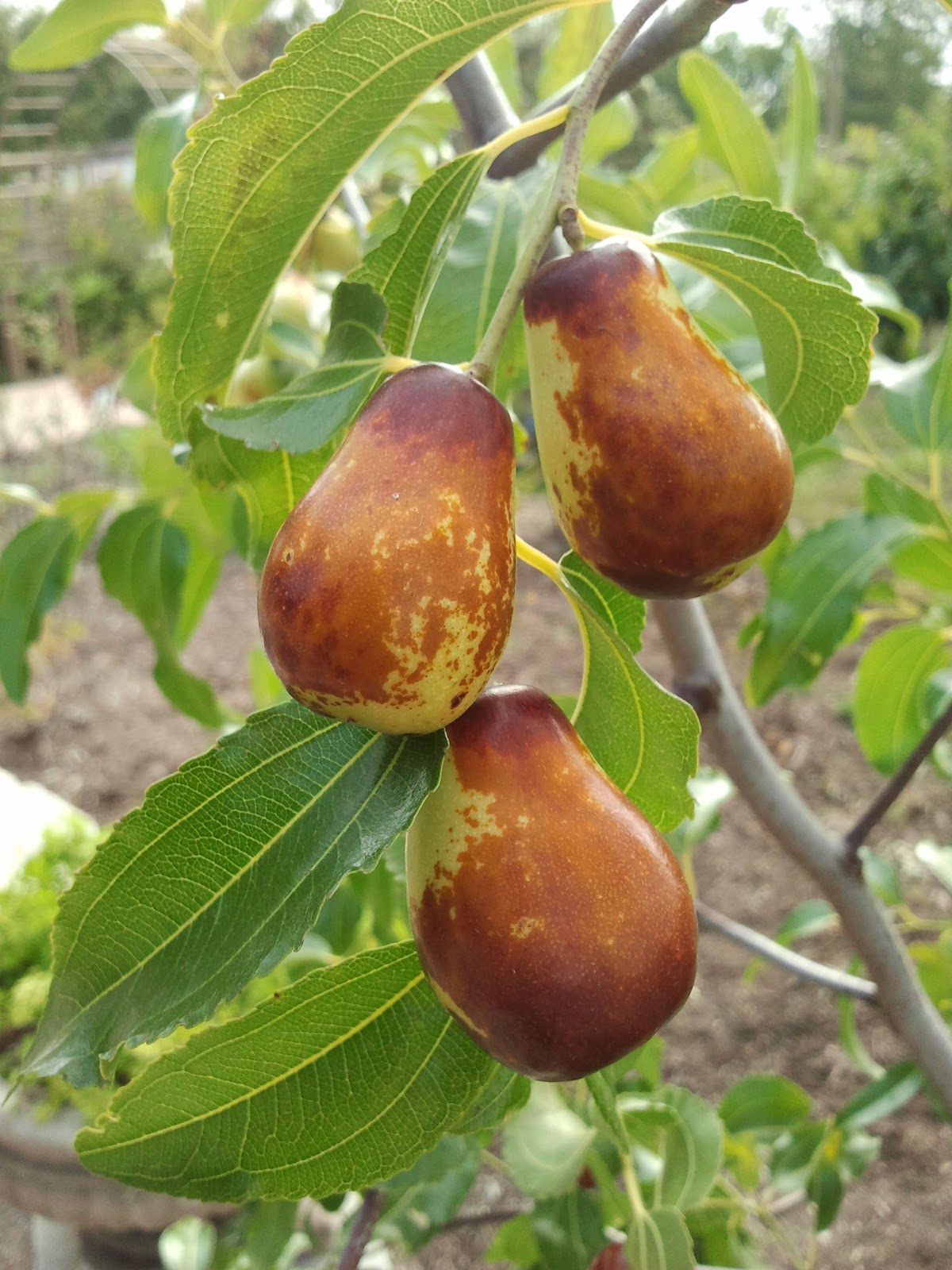Jujube Tree

Jujube tree
The jujube plant has potent natural therapeutic value, in promoting sleep and relaxation, reducing stress and anxiety, boosting healthy digestion, protecting the heart and the brain, and offering protection against cancer. Let's take a closer look at what's going on under the skin of this powerfully healthful plant.
How long does it take for a jujube tree to bear fruit?
Harvesting: Jujubes will start producing in 3 or 4 years, and the production can be very heavy. They are ready when they start to change color from lime green to a rust color. For best flavor, pick fruit in the early morning. Using Jujubes: Jujubes can be eaten fresh or used in recipes where apples would be used.
What does jujube taste like?
Jujube fruits are small and sweet. Dried, they have a chewy texture and taste similar to dates. When raw, these fruits have a sweet, apple-like flavor and can be eaten as a nutritious snack. They contain a pit with two seeds, which should be removed before eating.
Where do jujube trees grow?
They are grown primarily in Texas and the southwestern United States. Jujubes have survived drought and excess moisture better than any other fruit plant in trials at College Station, Texas. Though plants will survive in all areas of the state, they are better adapted to the more arid areas rather than the Gulf Coast.
How many jujubes can I eat a day?
Depending on the size of the fruit, eating one to three jujube fruits will meet the daily vitamin C recommendations of 90 milligrams for men and 75 milligrams for women.
How invasive are jujube trees?
Indian jujube (Ziziphus mauritiana), also known as Chinese apple, is a large shrub or small tree (Figure 1). The plant is native to South Asia and East Africa, but it has spread to Queensland, Australia, where it is considered a Class 2 Invasive Plant.
Do you need two jujube trees?
Jujube Varieties Although jujubes are self-pollinating, they'll bear more fruit if you plant two trees. 'Li' was first introduced in California by Frank Meyer. It is still considered one of the best varieties, ripening in late summer. It produces large fruit, ideal for fresh eating.
What do Americans call jujubes?
A thorny deciduous small tree or shrub (Ziziphus jujuba) native to Asia, widely cultivated for its edible fruit. b. The small sweet greenish to red fruit of this tree. Also called Chinese date.
Are jujube pits poisonous?
Jujubes are not toxic to dogs, but the seeds and pits have toxic properties. Much like apricots, as well as the dates we're more familiar with here in the states, these should all be removed. This is to avoid toxicity, allergic reaction, and choking.
Do jujube trees lose their leaves in winter?
It's easy to water a jujube tree because they are drought tolerant and winter deciduous. Drought tolerance means they can go longer without water, but they should be watered well when they do receive it. As a winter deciduous tree, they shed their leaves during the fall.
How tall do jujube trees get?
Jujube (Ziziphus jujube) was introduced into Texas in approximately 1875. The tree can grow to a height of 30-50 ft if soil and climatic conditions permit. The leaves are dark green and attractive with a shiny waxlike appearance above and a layer of fuzz on the lower side.
Does jujube tree need a lot of water?
Jujubes should receive at least 1 inch of water each week for best growth and fruit production. Water regularly, especially during dry periods. Fruit may drop prematurely if insufficiently irrigated during dry spells. Jujubes require little pruning.
Can you eat raw jujube?
Raw: The skin and flesh of jujubes is completely edible. Snack on them out of hand, and avoid the hard pit in the center. Chop raw jujube and sprinkle it over your granola, yogurt, salads and desserts.
Is jujube good for arthritis?
Dried jujubes are a good source of calcium, phosphorous that helps in developing and maintaining bone density. If you are someone suffering from arthritis then ber can be a good choice of fruit. It has anti-inflammatory properties that can provide relief and reduce swelling in the joints.
Does jujube increase blood pressure?
jujuba antagonizes endothelin-1 receptors and decreases blood pressure.
Do jujube trees have deep roots?
Jujube has a remarkable stress tolerance in general, as established seedlings grow normally in salinated soil. The mechanisms of its almost cactus-like drought tolerance have been well studied. The mature tap root reaches deep to about 13 meters. Several groups have examined drought stress on established trees.
How long does a jujube tree live?
A mature jujube tree can have 40 to 100 lb or more of fruit depending on tree size and culture management. Jujube trees can keep producing in commercial orchards for 50 years or more. The 'Jujube King' is over 1,000 years old and is still producing fruit annually in Shandong Province, China.
Which jujube tree is best?
The better varieties for fresh use are 'Honey Jar,' 'Sugar Cane,' 'Li,' 'Shanxi Li,' 'Sherwood' and 'Chico' ('GI 7-62'). Of these the largest is 'Shanxi Li' and the smallest is 'Honey Jar. ' 'Honey Jar' is the juiciest.
Which jujube is sweetest?
Super Sweet Jujube is the sweetest variety we've tried. Fruits have a high sugar content and sweet, apple flavor. Harvest at their light yellow stage for a fresh, crisp texture. Ripe fruits can also be candied or dried like dates.
Do jujube trees grow fast?
Lifespan: Jujube trees may be productive for more than 100 years. Leaf retention: Deciduous. Growth rate: Moderate to rapid. Mature Size: 30-50' high and 15-30' wide, depending on cultivar.











Post a Comment for "Jujube Tree "